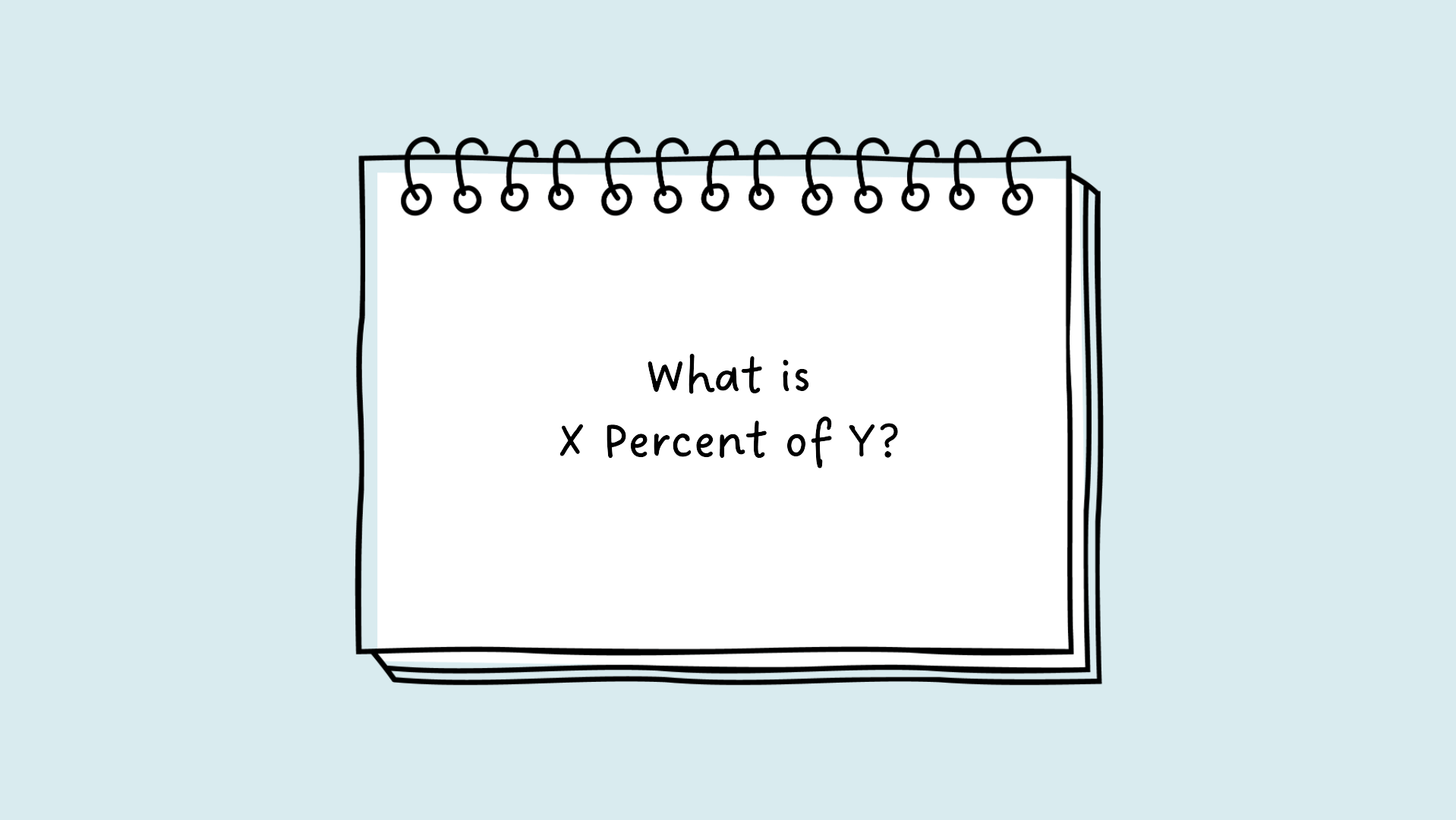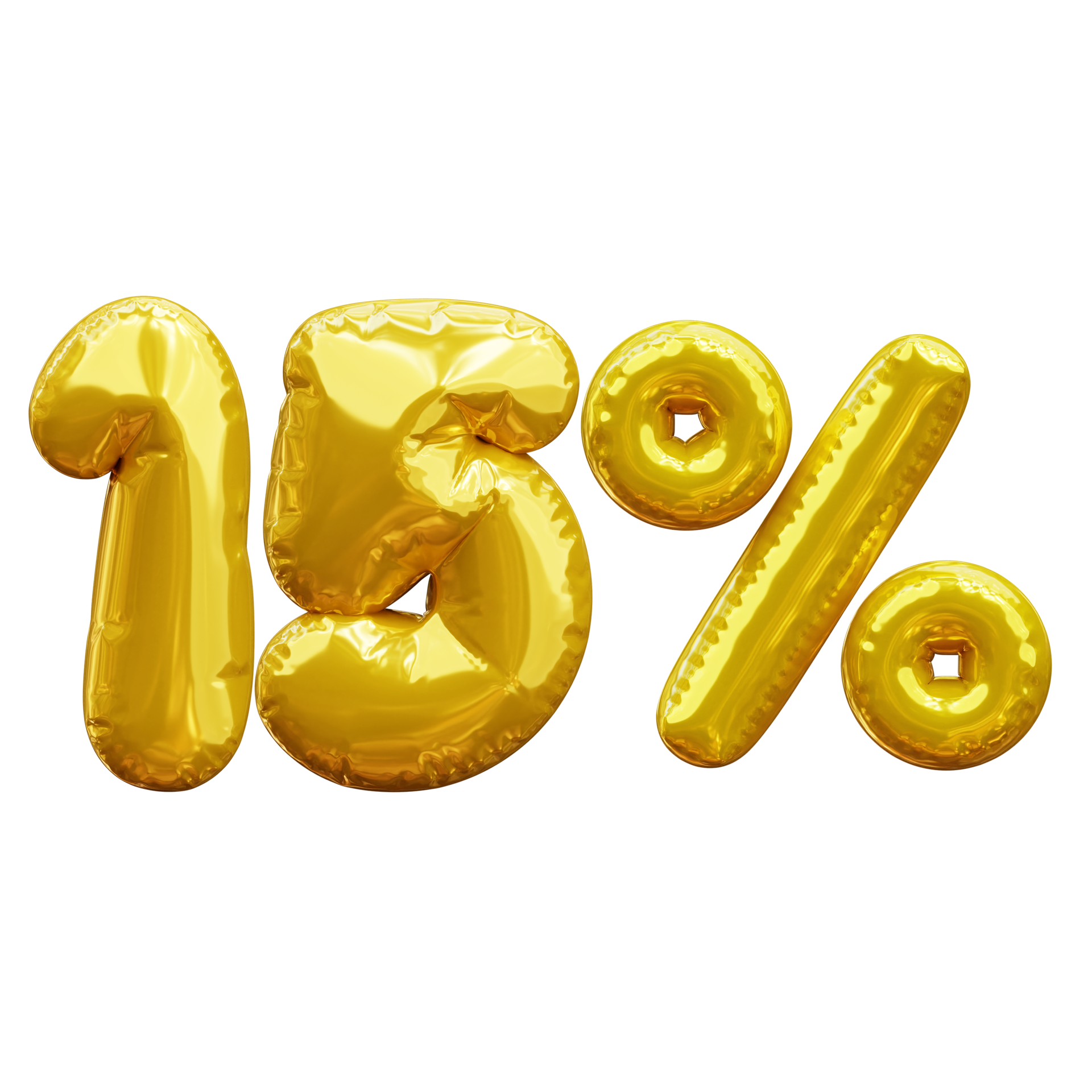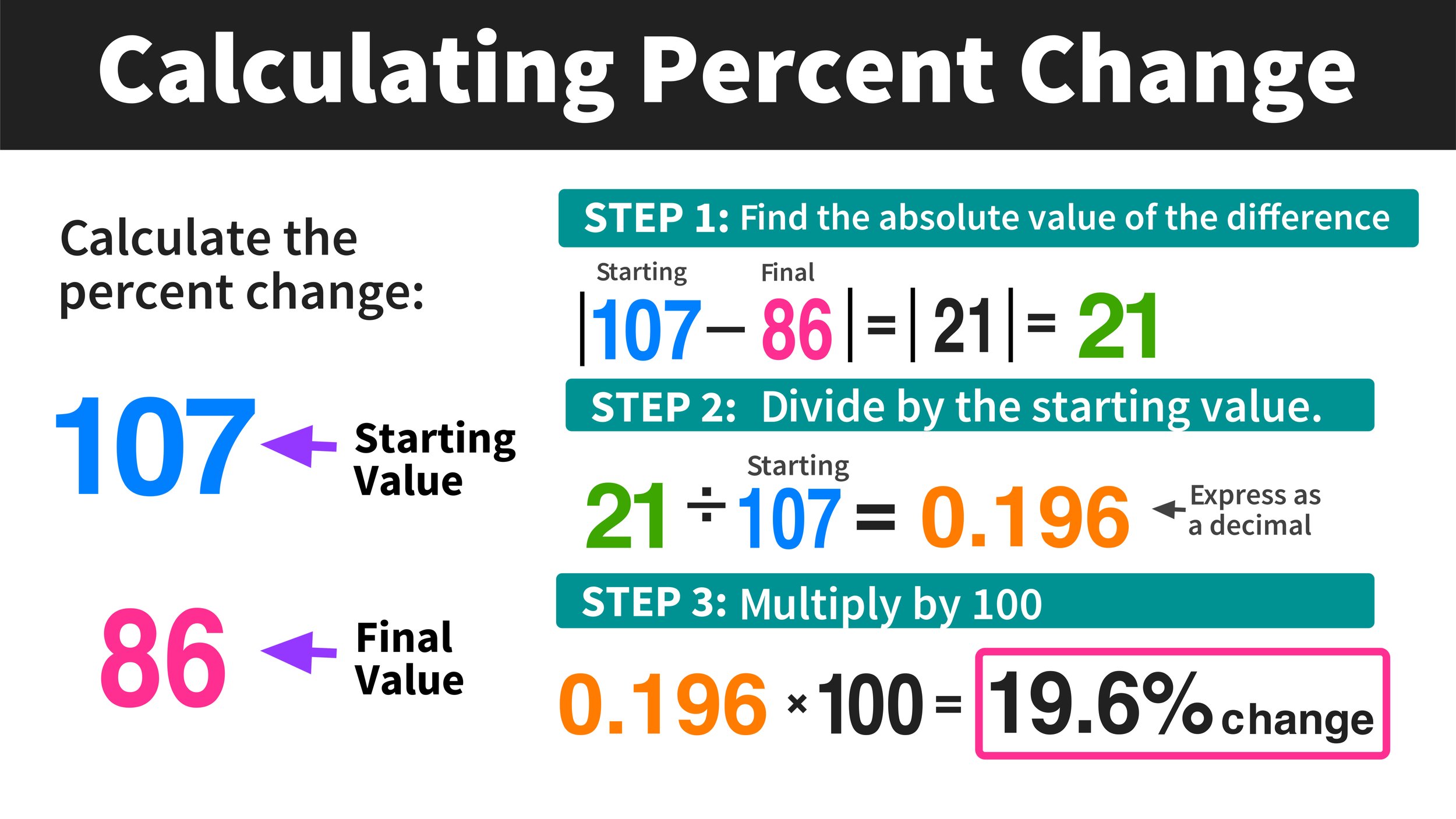15 Percent Of 3200 - What Does It Mean?
Ever wonder about numbers and what they truly mean in our daily goings-on? Sometimes, a simple calculation can tell us quite a bit about money, plans, or even how things are split up. We're going to look closely at a specific figure: 15 percent of 3200. This isn't just a math problem; it's a way to see how percentages pop up all around us, helping us make sense of different situations, you know?
Figuring out a portion of a larger amount, like taking 15 percent of 3200, is a pretty common thing. It could be about a discount when you're shopping, a tip you're leaving for good service, or maybe even a part of a big project budget. It's a way to break down a whole into smaller, more manageable pieces, which is actually quite useful for many different things.
As we explore this particular number puzzle, we'll also take a moment to appreciate the number 15 itself. It's a figure that, in some respects, has its own interesting story, showing up in various places and having a bit of unique character. So, let's get into what 15 percent of 3200 really comes out to be and why knowing this sort of thing can be helpful.
- Uncle Roger Gf
- Who Was Pete Holmes Married To
- Dog The Bounty Hunter Tucker
- Ddg And Halle Baby
- Roger Federer Children 2024
Table of Contents
- Figuring Out "15 Percent of 3200"
- Why Does "15 Percent of 3200" Matter in Everyday Life?
- What Exactly is the Number 15?
- The Number 15 - More Than Just a Figure in "15 percent of 3200"
- How Does "15 Percent of 3200" Show Up in Different Areas?
- Can "15 Percent of 3200" Help with Financial Planning?
- Looking at the Bigger Picture of "15 percent of 3200"
- What's So Special About the Number 15 Beyond "15 percent of 3200"?
Figuring Out "15 Percent of 3200"
So, let's get right to the heart of the matter: finding out what 15 percent of 3200 actually is. When we talk about percentages, we're basically talking about a part of a whole, usually out of one hundred. If you have 15 percent, that means you have 15 parts for every 100 parts of something. To figure this out with 3200, we can think of it as turning that percentage into a decimal first. You take 15 and divide it by 100, which gives you 0.15. Then, you simply take that 0.15 and multiply it by 3200.
When you do that multiplication, 0.15 times 3200, the number you get is 480. That's the answer to our little puzzle. So, 15 percent of 3200 is 480. This calculation is pretty straightforward, but the real trick is seeing how this figure, 480, might play a part in various everyday situations. It's almost like a small piece of a larger pie, isn't it? Understanding this simple math can open up ways to think about money, time, or resources.
For example, if you were looking at a group of 3200 items, and you needed to set aside 15 percent of them, you would be setting aside 480 items. Or, if you had a budget of 3200 dollars, and 15 percent of it was going towards a specific expense, that expense would be 480 dollars. It's a pretty handy way to break down bigger numbers into smaller, more understandable chunks, which is quite helpful for managing things.
- Lindseys Boyfriend Turner
- Buffy The Vampire Slayer Now
- Amanda Perterson
- Is Dana Perino Getting A Divorce
- Kardashian Star Signs
Why Does "15 Percent of 3200" Matter in Everyday Life?
You might be thinking, "Why should I care about 15 percent of 3200?" Well, this kind of calculation shows up more often than you might guess. Think about sales at a store. If an item originally costs 3200 dollars, and it's marked down by 15 percent, knowing how to do this math means you can quickly figure out how much you're saving. In this case, you'd save 480 dollars, which is a pretty good chunk of change, really.
It's also useful when you're dealing with tips. If you're out to eat and the bill is, let's say, a different amount, but you always like to leave a 15 percent tip, this method helps you figure out the right amount to give. Or, consider something like taxes or interest. If a certain tax rate is 15 percent on an income of 3200, you can quickly see what portion goes towards that. This helps you get a better grip on your personal finances, which is pretty important, you know?
This simple percentage figuring also comes into play in many other areas. Maybe you're tracking progress on a big project, and out of 3200 total tasks, 15 percent have been completed. That means 480 tasks are done. Or, if you're looking at population data, and 15 percent of a town's 3200 residents are in a certain age group, you'd know there are 480 people in that group. It's a basic tool that helps us make sense of numbers in a practical way, which is something we all do, more or less, every day.
What Exactly is the Number 15?
Beyond its role in calculations like 15 percent of 3200, the number 15 itself holds some interesting qualities. According to "My text", 15 is a natural number, meaning it's one of those counting numbers we use all the time. It comes right after 14 and just before 16. It's an odd number, so it can't be divided evenly by two. This might seem like a small detail, but it gives 15 its own unique spot on the number line, doesn't it?
The text also points out that 15 is what we call a composite number. This means it has more ways to be divided evenly than just by 1 and itself. For 15, you can divide it by 1, 3, 5, and 15. So, it's pretty versatile in that way. It's also known as a semiprime, which means it's the product of two prime numbers. In this case, it's 3 multiplied by 5. This makes it a rather special kind of number in the world of mathematics, actually.
You might also find it interesting that in Roman numerals, 15 is written as XV. This is a pretty old way of writing numbers, and 15 fits right in there. It's almost like a little piece of history in numerical form. So, while we use 15 to figure out a part of 3200, the number 15 on its own has a bit of a story, which is pretty neat to think about, isn't it?
The Number 15 - More Than Just a Figure in "15 percent of 3200"
The number 15, as "My text" tells us, shows up in some pretty diverse places, far beyond just being a part of 15 percent of 3200. For instance, it's the number of days in a fortnight. That's a term you don't hear every day, but it means two weeks, which is 14 days, plus one more day, making it 15. It's kind of a neat way to measure time, in a way.
Then there's the natural world. Did you know that it takes about 15 years for Saturn to make one full trip around the sun? That's a pretty long time if you think about it, showing just how big our solar system is. And for music lovers, a traditional piano usually has 15 keys in each octave. So, whether it's about time, space, or sound, the number 15 tends to pop up in some interesting spots, doesn't it?
"My text" also mentions that 15 has some historical and even religious meaning, especially as it's the product of two numbers often seen as sacred, 3 and 5. In ancient times, for example, the goddess Ishtar in Nineveh was served by 15 people. This suggests that the number 15 has been seen as important for a very long time, carrying a bit of extra weight in different cultures and beliefs. It's more than just a simple count; it's a number with a bit of a past, which is pretty cool.
How Does "15 Percent of 3200" Show Up in Different Areas?
Let's think about how the calculation of 15 percent of 3200 could be useful in various parts of life. Imagine you're a small business owner, and you're looking at your total sales for the month, which came out to 3200 dollars. If you know that 15 percent of those sales came from a particular new product, then you've sold 480 dollars worth of that product. This kind of information can really help you figure out what's working and what's not, which is pretty essential for running a business.
Or, consider a school setting. If there are 3200 students, and 15 percent of them participate in after-school clubs, that means 480 students are involved. This sort of data helps school administrators understand student engagement and plan for resources. It's a straightforward way to get a quick snapshot of a larger group, giving you a better picture of things, you know?
Even in health and wellness, this type of calculation can be relevant. If a fitness goal is to lose 15 percent of a certain weight, and that starting weight is 3200 units (perhaps grams or a hypothetical measurement for a large group), then the target reduction would be 480 units. This shows how percentages help us set clear, measurable aims. It's a pretty universal tool for breaking down big goals into smaller, more achievable steps, which is actually very motivating for people.
Can "15 Percent of 3200" Help with Financial Planning?
When it comes to managing your money, knowing how to figure out percentages like 15 percent of 3200 is incredibly handy. Let's say you're looking at your monthly income, and it's 3200 dollars. If you decide to put 15 percent of that into savings each month, you'd be putting away 480 dollars. Over time, that really adds up, helping you build a financial cushion for the future. It's a simple step, but it can make a big difference, you know?
This also applies to debt. If you owe 3200 dollars, and you're making payments that reduce the principal by 15 percent each time, you'd be paying down 480 dollars of the original amount with each payment. This helps you see your progress and gives you a clear idea of how long it might take to clear the debt. It's a way to break down a big financial hurdle into smaller, more manageable parts, which is pretty encouraging.
Moreover, if you're thinking about investments, understanding percentages is key. While 15 percent of 3200 might seem like a small calculation, it represents a portion of a larger sum. If an investment yields a 15 percent return on an initial amount, knowing how to quickly figure that out helps you estimate potential gains. It's almost like having a little financial superpower, allowing you to quickly size up different money situations and make smarter choices with your cash, which is something we all want to do, right?
Looking at the Bigger Picture of "15 Percent of 3200"
Thinking about 15 percent of 3200 isn't just about getting a single number; it's about seeing how parts relate to a whole. This kind of thinking helps us in so many different situations, from understanding data in the news to planning personal projects. When you hear about statistics, for instance, often they are given in percentages. Knowing how to quickly translate those percentages back into actual numbers, or vice versa, helps you get a clearer picture of what's being discussed. It's like having a special lens to view information, in a way.
This skill is also pretty useful in problem-solving. If you're faced with a challenge that involves dividing resources or understanding proportions, being able to figure out a percentage of a total amount gives you a solid starting point. For example, if a team has 3200 tasks to complete, and they've assigned 15 percent of them to one group, you immediately know how many tasks that group is responsible for. This makes planning and delegation much smoother, which is actually very helpful in any group effort.
Ultimately, this simple calculation, 15 percent of 3200, serves as a great example of how basic math skills are truly practical. They're not just for school; they're tools we use to navigate our daily lives, whether we're aware of it or not. It helps us make sense of numbers, manage our resources, and even understand the world around us a little better. It's a pretty fundamental concept that comes in handy quite often, you know?
What's So Special About the Number 15 Beyond "15 percent of 3200"?
As we've seen, the number 15 is more than just a component in our calculation of 15 percent of 3200. "My text" highlights that it's a number that pops up in technology, too. For instance, the iPhone 15 Plus features a Super Retina XDR display, a 6.7-inch all-screen OLED display with rounded corners. This shows how numbers like 15 are often used to name or describe products, giving them a distinct identity. It's a pretty modern way for a number to show its face, isn't it?
The text also mentions that 15 can be expressed as the difference of two positive squares. This is a bit more on the mathematical side, but it shows the number's interesting properties in number theory. It means you can find two square numbers that, when you subtract one from the other, give you 15. It's almost like a hidden pattern within the number itself, which is kind of neat if you're into that sort of thing.
Overall, the number 15, as "My text" explains, has a rich story. From its basic properties as an odd, composite number to its appearance in ancient beliefs, natural cycles, musical instruments, and even the latest gadgets, it's a number that seems to have a lot going on. So, while we might focus on its role in calculating 15 percent of 3200, it's worth taking a moment to appreciate the number 15 for all its other interesting connections and meanings, too. It's a figure that truly has a bit of character.
- Cheryl Tiegs Fishnet Suit
- Does Jack Dutton Die
- Stella Ritter 2022
- Michael Gottlieb Lawyer Blake Lively
- Sebastian Stan Jennifer Morrison

What is 30 Percent of 3200? - Percentify

15 Percent Discount 22452449 PNG

Calculating Percent Change In Easy Steps — Mashup Math, 46% OFF